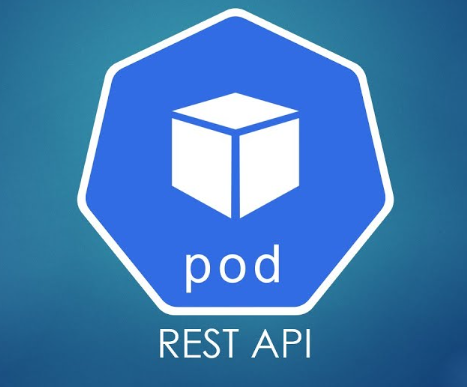Understanding REST and its Role in the Kubernetes API
 Rahul Bansod
Rahul Bansod
When working with Kubernetes, one of the foundational components that developers interact with is the Kubernetes API, a RESTful API. REST (Representational State Transfer) APIs are widely used across various web applications due to their many benefits, including scalability, portability, and simplicity. In Kubernetes, the API structure’s simplicity is particularly useful, as it allows users to determine and control levels of access effectively.
For those who are new to REST, let’s break down some of the basics. At the core of REST is the concept of “resources,” which are the objects we interact with. We manipulate these resources through “verbs” like we would in everyday language. For example, if we say, “delete the Pod,” we are using both a noun (Pod) and a verb (delete) to express an action on a resource. REST APIs function similarly; each resource (such as a Pod) can be manipulated using standard actions.
Examining Kubernetes API Requests
To see this concept in action, we can take a closer look at how kubectl requests information about a resource, such as a Pod. By increasing the verbosity level in the command with the -v option, we can gain insights into the specific API calls that kubectl is making on our behalf. Here’s an example command:
$ kubectl -v=6 get po testpod
Running this command provides a detailed log, revealing information about the configuration file, connection, and the specific HTTP request sent by kubectl:
10202 00:28:31.933993 17487 loader.go:357] Config loaded from file /home/ubuntu/.kube/config
10202 00:28:31.994930 17487 round_trippers.go:436] GET https://10.0.0.1:6443/api/v1/namespaces/default/pods/testpod 200 OK
In this example, kubectl issues a GET request (representing the "Read" operation) for the pods/testpod resource. The URL path also includes other elements, such as the API version (/api/v1), the namespace (default), and the specific Pod we are querying (testpod). These elements provide additional context, but at its core, the primary elements here are the resource (pods/testpod) and the HTTP verb (GET).
CRUD Operations in REST and Kubernetes
REST APIs operate primarily with four basic operations: Create, Read, Update, and Delete (often abbreviated as CRUD). In HTTP, these operations correspond to the verbs:
POST: Create
GET: Read
PUT: Update
DELETE: Delete
These four actions make up the majority of HTTP requests found on the internet and allow for a straightforward way to interact with resources in a REST API.
Kubernetes also follows the CRUD model, enabling users to create, delete, update, and retrieve information about resources such as Pods. However, the Kubernetes API expands beyond the basic CRUD actions to include additional verbs, such as:
List: Retrieve a collection of resources
Watch: Continuously monitor a resource for changes
Patch: Update a resource partially
Proxy: Access a resource through a network proxy
Redirect: Redirect to another resource
DeleteCollection: Delete multiple resources at once
These additional verbs allow Kubernetes to offer a more flexible API, meeting the unique requirements of managing and scaling containerized applications.
Working with Kubernetes Resources
In Kubernetes, resources are constructs that are familiar to anyone working within the platform, such as Pods, Services, and Deployments. Using kubectl, users can issue commands that correspond to these HTTP verbs to manipulate and interact with these resources. The verbs enable not only the basic CRUD operations but also specialized interactions like watching or proxying, which are essential for effective Kubernetes cluster management.
For example, using the kubectl get command retrieves information about a resource, while kubectl delete removes it. With each command, the client (in this case, kubectl) uses the relevant API verbs to issue the necessary HTTP requests behind the scenes.
Conclusion
The Kubernetes API, as a RESTful API, is fundamental to the way users and applications interact with Kubernetes clusters. By leveraging HTTP verbs to perform actions on resources, the Kubernetes API simplifies complex operations into a series of standardized commands, making it easier to manage containerized workloads. Whether you're creating, updating, or deleting resources, understanding the REST principles underlying these interactions is key to mastering Kubernetes.
Subscribe to my newsletter
Read articles from Rahul Bansod directly inside your inbox. Subscribe to the newsletter, and don't miss out.
Written by

Rahul Bansod
Rahul Bansod
Kubernetes Consultant and DevOps Enthusiast, passionate about simplifying cloud-native technologies for developers and businesses. With a focus on Kubernetes, I dive deep into topics like API server processing, authentication, RBAC, and container orchestration. Sharing insights, best practices, and real-world examples to empower teams in building scalable, resilient infrastructure. Let's unlock the full potential of cloud-native together! Let me know if you'd like any adjustments!